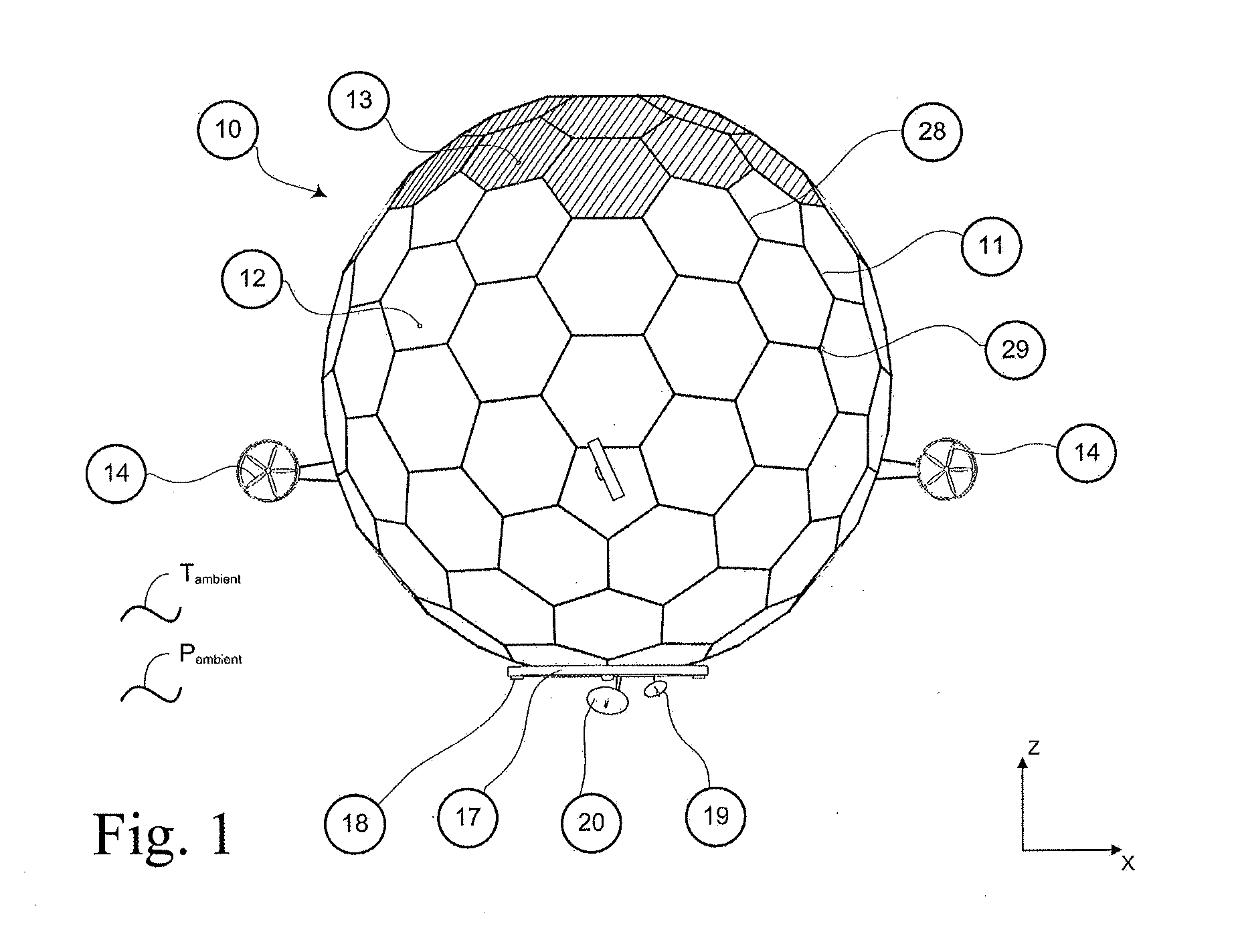Autonomous stratospheric unmanned airship
an airship and autonomous technology, applied in aircrafts, lighter-than-air aircraft, transportation and packaging, etc., can solve the problems of short life span, difficult maintenance, and high cost of geostationary and low-orbit satellites,
- Summary
- Abstract
- Description
- Claims
- Application Information
AI Technical Summary
Benefits of technology
Problems solved by technology
Method used
Image
Examples
Embodiment Construction
[0049]The description that follows, and the embodiments described therein, are provided by way of illustration of an example, or examples, of particular embodiments of the principles of the present invention. These examples are provided for the purposes of explanation, and not of limitation, of those principles and of the invention, in a manner which is clear to a person skilled in the art.
[0050]For the purposes of this description, it will be assumed that operating conditions are referenced to an ISA standard day, namely to a datum of atmospheric conditions at sea level on a 15° C. (59 F) day. Also for the purposes of description, the airship is thought of as having a vertical, or z-axis, a longitudinal, or x-axis, and a transverse or y-axis. In the preferred embodiment (with four propulsion units) the airship does not have a specific leading or trailing side, and x- and y-axis merely define horizontal plane. The force of gravity, and hence buoyancy, acts parallel to the z-axis.
[00...
PUM
 Login to View More
Login to View More Abstract
Description
Claims
Application Information
 Login to View More
Login to View More - R&D
- Intellectual Property
- Life Sciences
- Materials
- Tech Scout
- Unparalleled Data Quality
- Higher Quality Content
- 60% Fewer Hallucinations
Browse by: Latest US Patents, China's latest patents, Technical Efficacy Thesaurus, Application Domain, Technology Topic, Popular Technical Reports.
© 2025 PatSnap. All rights reserved.Legal|Privacy policy|Modern Slavery Act Transparency Statement|Sitemap|About US| Contact US: help@patsnap.com



